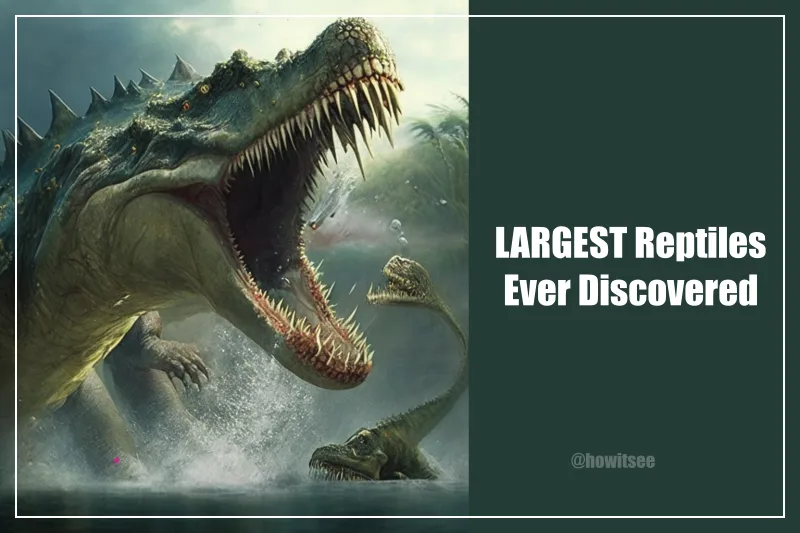Here, in this article, we will be discussing the list of the largest reptiles ever discovered on Earth, so it means that the list will also comprise prehistoric reptiles too. Join us on an awe-inspiring journey as we explore the colossal creatures that ruled ancient and modern landscapes, from Prehistoric Megalania to modern-day crocodiles. Let’s explore the fascinating world of non-dinosaur reptiles that have reigned supreme in size and power.
9 Largest Reptiles Ever Discovered
1) Carbonemys
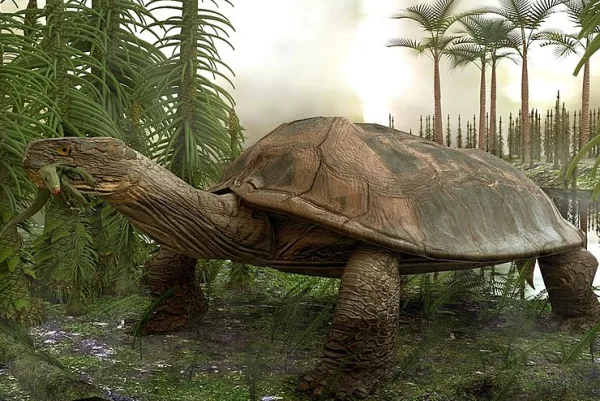
Carbonemys, the colossal turtle from the Paleocene Park, was an awe-inspiring creature of prehistoric times, reaching lengths of up to 13 feet and weighing over 2,000 pounds. It surpassed any modern-day turtle in sheer size.
Its name, meaning “coal turtle,” was fittingly derived from its discovery in Colombian coal mines. The most striking feature of Carbonemys was its massive shell, which extended approximately six and a half feet in length.
This shell provided unparalleled protection against predators and the elements, making Carbonemys a true titan among turtles. What allowed Carbonemys to attain such astonishing proportions?
The Paleocene epoch was characterized by abundant wetlands and swamps, which offered plentiful food resources. With a lack of significant land predators during that time, Carbonemys had the freedom to grow to immense sizes.
Despite its massive dimensions, Carbonemys is believed to have had an herbivorous diet, primarily feeding on the bountiful plant life found in its aquatic habitats.
However, some theories propose that it was an aggressive carnivore and formidable hunter capable of taking down ancient crocodiles as its prey.
2) Megalania
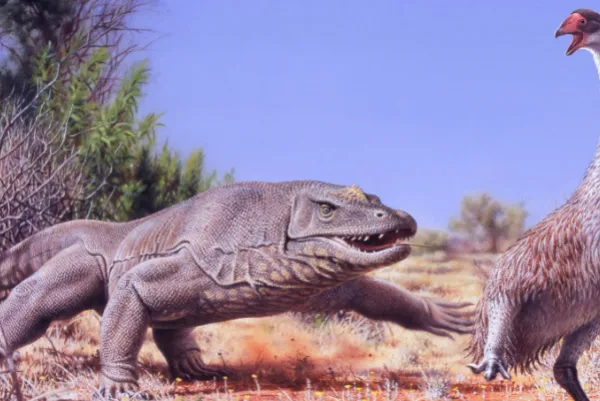
Megalania, think of a Komodo dragon blown up into unreasonable proportions, and you get the Megalania. This mighty lizard measured up to 20 feet long, possibly even longer at an astonishing 23 feet.
But this heavyweight champion wasn’t just long; it could have weighed over 1,000 pounds. With its massive skull, sharp teeth, and powerful jaws, Megalania reigned as an apex predator in the ancient Australian ecosystem.
Roaming through the woodlands and grasslands, Megalania was always on the prowl for a diverse range of prey. It targeted mammals, birds, reptiles, and even fellow lizards, establishing its dominance as a top predator.
Its formidable presence and hunting prowess made it an undisputed ruler of its environment. Unfortunately, Megalania’s reign came to an end around 40,000 years ago. The reasons for its demise are still debated, but human hunting and environmental changes are among the potential factors.
Regardless of its fate, Megalania continues to captivate the minds of paleontologists and enthusiasts alike. Its legacy stands as a testament to the wonders of prehistoric life, stirring the curiosity and imagination of those who delve into the world of ancient creatures.
3) American crocodile
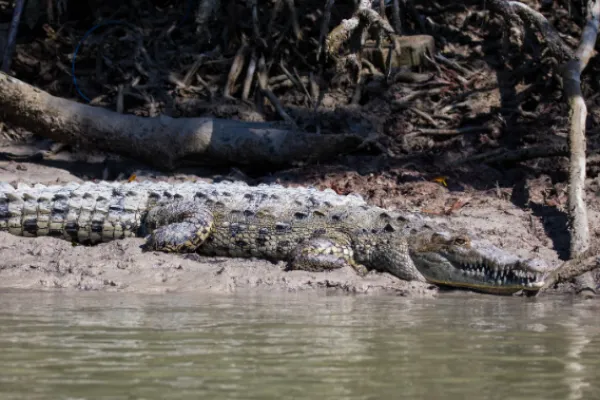
The American crocodile is an awe-inspiring reptile that leaves us speechless with its sheer size. As one of the largest crocodile species in the world, it reaches astounding lengths of 13 to 18 feet, with some exceptional individuals exceeding 20 feet in length.
Not only are they incredibly long, but they also have the weight to match their impressive size. Adult males can weigh a whopping 900 to 2,000 pounds, while females typically clock in at around 500 to 1,000 pounds.
That’s a lot of reptiles! The American crocodile’s enormous dimensions are perfectly suited to its predatory lifestyle. With their muscular bodies and fearsome teeth, they dominate their habitats with ease.
While they mainly feast on fish, amphibians, birds, and mammals, they’re versatile hunters and won’t say no to an opportunity for a tasty meal.
These magnificent creatures are found in coastal areas of the southeastern United States, Mexico, Central America, and Northern South America.
4) Orinoco crocodile
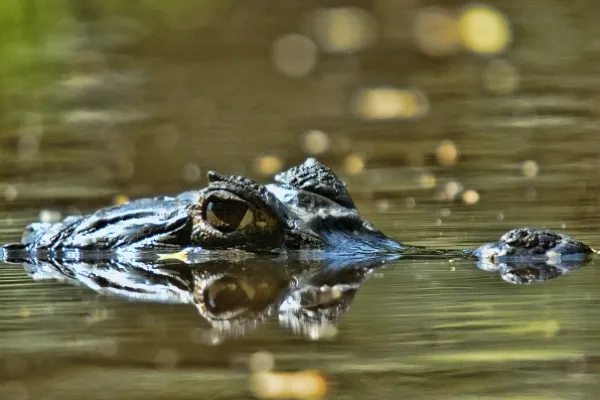
The Orinoco crocodile, also known as Crocodylus intermedius, is a truly magnificent reptile found in the Orinoco River Basin of South America. Reaching lengths of up to 16 to 20 feet and weighing between 880 to 1,100 pounds, these monsters are an impressive sight to behold.
With their robust build, males tend to grow even larger than females. Their long snouts equipped with sharp teeth and top-mounted eyes and nostrils make them expert hunters lurking in the waters to surprise their prey.
As apex predators, Orinoco crocodiles feed on fish, reptiles, birds, and mammals found near the riverbanks. Though they generally avoid humans, their territorial nature and protective instincts can make encounters risky.
Sadly, the Orinoco crocodile faces critical endangerment due to illegal hunting and habitat loss. Conservation efforts are now underway to protect their habitats, prevent poaching, and aid in their population recovery.
5) Saltwater Crocodile
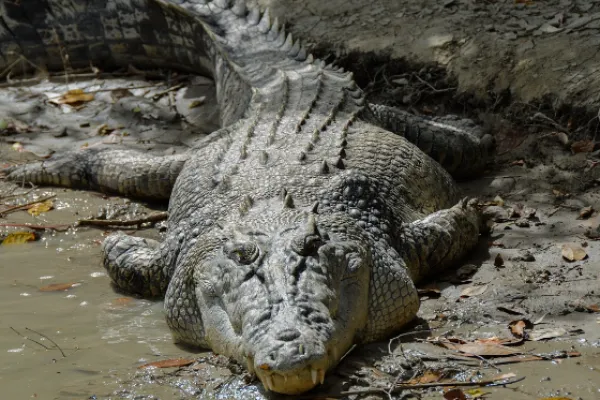
There’s no question that the saltwater crocodile, also known as the estuarine crocodile or “salty,” is a big boy. In fact, it’s the largest living reptile on the planet. Adult males can reach mind-blowing lengths of 4.3 to 5.2 meters and weigh over 1,000 kilograms.
Some extraordinary individuals have been recorded measuring over six meters. But it’s not just the males that are impressive; the females, though smaller, still pack a punch. They measure around three to four meters and weigh 400 to 700 kilograms.
Can you just imagine encountering one of these magnificent creatures in the wild? Their incredible size gives them an edge in their habitat, which includes the waters of Southeast Asia, Northern Australia, and nearby islands.
With such strength and power, they rule their territory and dominate the food chain. These fearsome predators feast on fish, turtles, birds, and even mammals that dare to venture near the water. And sadly, these magnificent giants are also facing threats like habitat loss and illegal hunting.
6) Deinosuchus
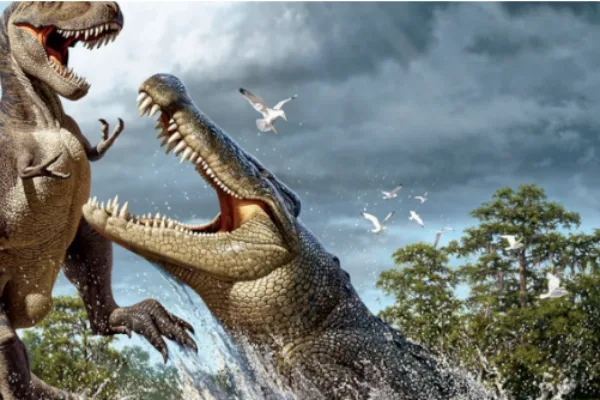
The name Deinosuchus doesn’t mean “terrible crocodile” for nothing. This colossal creature prowled the ancient waterways of North America during the late Cretaceous Period, around 75 to 82 million years ago.
And when we say colossal, we mean it in the most jaw-dropping way possible. Deinosuchus could grow up to an astounding 33 to 39 feet in length, making it even bigger than today’s largest crocodiles.
Some of these were even rumored to reach an astonishing 43 feet long. But size wasn’t the only mind-boggling aspect of this ancient reptile. Deinosuchus tipped the scales at a whopping eight and a half tons, that’s twice the weight of the largest modern crocodiles.
Let’s not forget about its skull; it was massive and built like a fortress, equipped with teeth that could send shivers down your spine. These powerful jaws could deliver bone-crushing bites, making Deinosuchus a true apex predator.
7) Sarcosuchus

There’s definitely a big reason why scientists have dubbed Sarcosuchus as the “super croc.” This incredible ancient crocodilian, which prowled the Earth around 112 to 93.5 million years ago during the Cretaceous Period, was unlike anything we’ve seen today.
Imagine a crocodile that dwarfed even the largest modern species. Sarcosuchus reached mind-boggling lengths of up to 40 feet, or possibly even more, longer than a school bus. And it wasn’t just its length that was jaw-dropping; this colossal creature weighed a staggering 8 to 10 metric tons, equivalent to the weight of two adult elephants.
Sarcosuchus was truly a titan of its time. The skull of Sarcosuchus alone was a sight to behold, measuring up to five feet in length. Its slender gharial-like snout was armed with numerous sharp conical teeth, ready to snatch up its prey.
But what made Sarcosuchus even more awe-inspiring was its broad, flat skull. This feature allowed it to deliver a powerful bite force surpassing that of modern crocodiles. It patrolled lakes, rivers, and coastal regions, lying in wait for anything that came its way.
This colossal predator was a force to be reckoned with, capable of taking down dinosaurs, turtles, fish, and even other crocodiles. It reigned as the ultimate apex predator, dominating the ancient waterways with sheer size and power.
8) Titanoboa
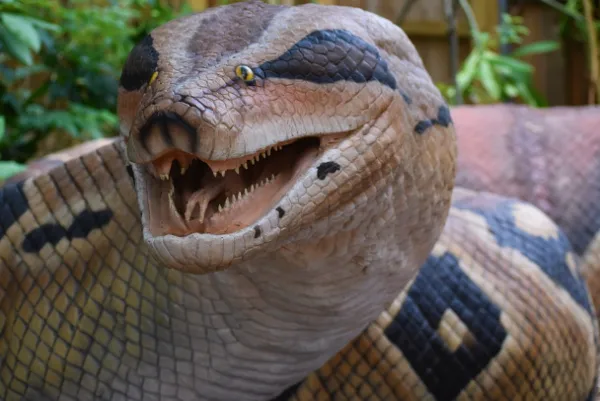
This magnificent creature, the largest snake ever known to have slithered on Earth, ruled the Paleocene epoch around 58 to 60 million years ago. Titanoboa earns its name derived from the Greek words for “giant” and “boa.”
Belonging to the colossal boa day family, size matters, and Titanoboa takes the crown with its jaw-dropping dimensions. Fossil evidence indicates that this prehistoric serpent stretched a mind-boggling 42 to 50 feet in length, outweighing modern-day snakes by an astonishing margin.
Weighing in at a jaw-dropping 1,100 to 2,500 pounds, this ancient predator patrolled a steamy tropical environment, thriving in a time when the Earth’s temperatures soared.
With an appetite to match its size, Titanoboa feasted on formidable prey such as crocodiles and giant turtles, making it the ultimate apex predator of its ecosystem.
9) Mosasaurus
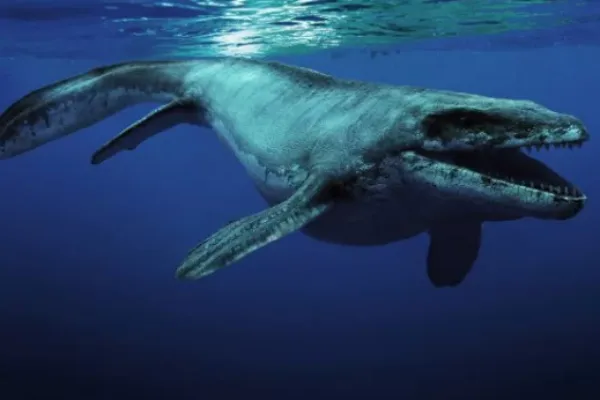
Mosasaurus, this massive marine reptile from the late Cretaceous Period, was absolutely magnificent. In terms of its size, this incredible creature, part of the Mosasaur family, was perfectly adapted for life in the ancient seas.
With its streamlined body, powerful flippers, and elongated shape, the Mosasaurus was a true giant, reaching an average length of 15 to 18 meters. Some specimens indicate even larger sizes.
For example, Mosasaurus discovered in the Netherlands measured a mind-boggling 17 meters long, making it one of the largest mosasaurs ever found. This monster of the deep had a sleek body, a long tail, and a head designed for hunting. Its jaws were armed with sharp, backward-curving teeth that could trap and devour prey with ease.
Talk about a fearsome predator! This beast likely dined on fish, ammonites, sea turtles, and other marine reptiles. Swimming through the water like a true powerhouse, the Mosasaurus was a force to be reckoned with.
Its muscular tail and flippers propelled it with incredible speed and agility. As an apex predator, it ruled the ancient seas, taking down sizable prey thanks to its immense size and hunting skills.
Conclusion
The colossal creatures that once ruled ancient and modern landscapes evoke a sense of wonder and awe.
From the Carbonemys and Megalania of prehistoric times to the American crocodile, Saltwater crocodile, Orinoco crocodile, Deinosuchus, Sarcosuchus, Titanoboa, and Mosasaurus, their massive proportions and immense power leave an indelible mark in our imaginations.
While many of these ancient giants have vanished from the Earth, their legacy continues to captivate us, reminding us of the incredible diversity and splendor of prehistoric life.
Frequently Asked Questions
Q1. What is the largest crocodile species?
Ans. The saltwater crocodile holds the title for the largest living reptile.
Q2. Where did the Megalania live?
Ans. Megalania, the mighty lizard, inhabited the ancient Australian ecosystem.
Q3. What was the size of Titanoboa?
Ans. Titanoboa, the giant serpent, could reach lengths of 42 to 50 feet.
Q4. Are American crocodiles dangerous to humans?
Ans. While American crocodiles generally avoid humans, encounters can be risky due to their territorial nature and protective instincts.
Q5. What led to the extinction of Deinosuchus?
Ans. The reasons for Deinosuchus’ extinction are still debated, but factors such as environmental changes and human hunting may have played a role.
Also Read:

Meet Abhidept (nickname Monty), the visionary founder of How It See, being an engineering student, he’s fueled by an insatiable curiosity about the world around him. He is captivated by an eclectic correlation between animal groups, science, and nature, and this fascination drives his quest for understanding.
After completing his degree, he’s set on a mission to delve deep into the realm of nature, accumulating knowledge to share with you through his writing. In the meantime, he loves to watch anime and read anime.
